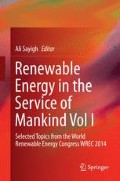Abstract
New strong demands for a more sustainable built environment led to a more complex design process. The different expertise of engineers must be used more effectively by architects especially in the conceptual design phase to reach for new solutions. To support diverse multidisciplinary building design teams, a supportive design method was developed in cooperation with the Dutch professional organizations of architects and consulting engineers. It helps architects and engineers with their new role in the conceptual design phase as it enables to structure each perspective on the design task as well as to structure the available domain knowledge by using morphological charts (MC) and morphological overviews. After testing the method in workshops as part of a training program in industry, the design method was transferred and applied at the department of architecture for master students for their multidisciplinary master project integral design (ID). In the past 9 years, master projects ID were held and there was a continuous development to optimize the cooperation between architects and engineers. The research showed that it is possible to engage engineers and let other disciplines learn from them within the conceptual building design phase, which makes it easier to achieve nearly zero-energy buildings.
Access this chapter
Tax calculation will be finalised at checkout
Purchases are for personal use only
References
Taleghani M, Ansari HR, Jennings P (2010) Renewable energy education for architects: lessons from developed and developing countries. Int J Sustain Energy 29(2):105–115
Lee J, Jeong Y (2012) User-centric knowledge representations based on ontology for AEC design collaboration. Comput Aided Des 44:735–748
Kanters J, Horvan M (2012) The design process known as IDP: a discussion. Energy Procedia 30:1153–1162
Kanters J, Horvat M, Dubois M (2012) Tools and methods used by architects for solar design. Energy Build 68:721–731
Juan YK, Gao P, Wang J (2010) A hybrid decision support sytem for sustainable office building renovation and energy performance improvement. Energy Build 42:290–297
Larsson N, Poel B (2003) Solar low energy buildings and the integrated design process—an introduction. http://www.iisbe.org/system/files/Task23_introduction.pdf. Accessed 7 July 2015.
Biesbroeck K, Klein R, Versele A, Breesch H (2010) Design process for Net-Zero Energy Buildings. Proceedings conference: Towards 0-impact Buildings and Built Environment SB10, Maastricht
CURT (2004) Construction users roundtable (CURT) architectural/engineering productivity committee. Collaboration, integrated information and the project life cycle in building design, Construction and Operation (WP-1202)
King D (2012) Holistic approach. CIBSE J January 47–49
Young L (2014) I cannot think of a better career than services engineering. Inteverview with Mike Davis. CIBSE J April:29–31
Simon H (1969) Sciences of the artificial. MIT Press, Cambridge
Frankel L, Racine M (2010) The complex field of research for design, through design, and about design. Proceedings Design Research Society conference Design & Complexity, 7–9 June 2010, Montreal
Chai K-H, Xiao X (2012) Understanding design research: a bibliometric analysis of design studies (1996–2010). Des Stud 33(1):24–43
Cross N (2007) Editorial forty years of design research. Des Stud 28(1):1–4
Bayazit N (2004) Investigating design: a review of forty years of design research. Des Issues 20(1):16–29
Wynn D, Clarkson J (2005) Models of designing. In: Clarkson J, Eckert C (eds) Designing process improvement—a review of current practice. Springer, London
Pahl G, Beitz W, Feldhusen J, Grote KH (2006) Engineering design. A systematic approach, 3rd edn. Springer, London
Ranjan BSRC, Srinivasan V, Chakrabarti A (2012) An extended, integrated model of designing. Proceedings of TMCE, Karlsruhe
Gericke K, Blessing L (2012) An analysis of design process models across disciplines. Proceedings International Design conference Design 2012, Dubrovnik
Zeiler W, Savanović P (2009) General systems theory based integral design method. ICED’09, Stanford
Blessing LTM (1994) A process-based approach to computer supported engineering design. PhD-thesis, Universiteit Twente
Zwicky F (1948) Morphological astronomy. The Observatory 68(845):121–143
Savanović P (2009) Integral design method in the context of sustainable building design. PhD thesis, Technische Universiteit Eindhoven
Ölvander J, Lundén B, Gavel H (2008) A computerized optimization framework for the morphological matrix applied to aircraft conceptual design. Comput Aided Des 41(2):187–196
Ritchey T (2010) Wicked problems social messes, decision support modelling with moprhological analysis, Swedish morphological society. Stockholm
Author information
Authors and Affiliations
Corresponding author
Editor information
Editors and Affiliations
Rights and permissions
Copyright information
© 2015 Springer International Publishing Switzerland
About this chapter
Cite this chapter
Zeiler, W. (2015). How to Reach for the Necessary Synergy Between Architecture and Engineering. In: Sayigh, A. (eds) Renewable Energy in the Service of Mankind Vol I. Springer, Cham. https://doi.org/10.1007/978-3-319-17777-9_42
Download citation
DOI: https://doi.org/10.1007/978-3-319-17777-9_42
Published:
Publisher Name: Springer, Cham
Print ISBN: 978-3-319-17776-2
Online ISBN: 978-3-319-17777-9
eBook Packages: EnergyEnergy (R0)

